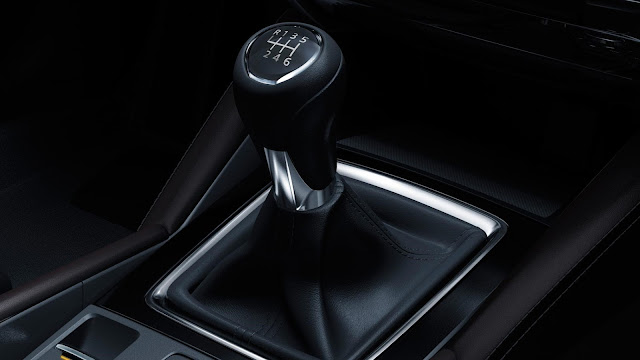Manufacturers normally stress how much they’ve changed on their new models, but Mazda instead seems to be highlighting how little is new on the revised 6 saloon and estate.
This is not a brand-new model, a facelift or even a new model year 6, but an ‘update’. This doesn’t mean that the changes are any less important, however.
Firstly, Mazda has worked to further smooth and silence its already pretty slick twin-turbo diesel engine. It’s also put in additional sound insulation and introduced G-Vectoring Control. Oh, and the steering wheel’s been redesigned.
One area where the 6 resolutely hasn’t changed is with regards to its price. The company has hinted that its PCP finance offers should remain similarly affordable, when updated on 1 October – roughly coinciding with the arrival of updated cars.
What on earth is G-Vectoring Control?
This new software fractionally cuts the amount of torque sent to the front wheels when cornering. This transfers a tiny amount more weight onto the front end, boosting traction, cornering response and accuracy. The aim is to deliver a smoother, more easy-going drive.
Mazda states that this is the only system to take steering inputs into account in how and when it reduces power – enabling smoother transitions between accelerating, braking and turning. Consequently, the company claims, the car’s balance is also improved.
Meanwhile, fewer steering corrections should be needed on straight roads, meaning reduced driver fatigue and delivering greater comfort for passengers. This kit is standard across the updated 6 range and can’t be switched off, though you’re unlikely to ever notice it working.
So how does the revised Mazda 6 saloon drive?
The 6 has always been an enjoyable car to drive and that remains true – whether you choose a model on 17-inch alloys wrapped in plenty of rubber or a Sport Nav version on low-profile 19s. The steering is accurate and well weighted, while the car takes corners with confidence. The ride’s good, too, boosting the Mazda’s appeal.
In the real world, the effect of G-Vectoring Control appears minimal. That doesn’t come as a huge surprise but as it’s standard and adds no weight, we’ve no objections to its presence. The steering in our SE-L Nav test car felt suitably precise on both country roads and motorways, so no harm has been done to the 6’s fine road manners, while the MX-5-style short-throw gear continues to satisfy.
Is it really quieter on the move?
The new noise reducing tech in the diesel engine, which works to reduce clatter, contributes to an even quieter drive – and, as before, little wind or road noise intrudes into the cabin. Both 148bhp and 173bhp diesel engines are smooth and sound far more like petrol engines, most of the time.
Even the lesser engine offers more than enough muscle for most situations. The twin turbos grant a very broad spread of power, making it feel more flexible and potent than the 148bhp figure would suggest. Low VED and impressive claimed MPG figures add further to the overall package, in either case.
Verdict
The current Mazda 6 has always put forward a strong case for itself and it’s even more tempting now. The styling is as sharp as ever, engine refinement is improved and prices remain the same.
Whether G-Vectoring Control offers a real benefit to owners is up for debate, but there are no inherent penalties either. Throw in competitive prices, and very strong value finance deals, and the 6 is well worth considering for those thinking about a Skoda Octavia.
It also makes for a good cut price alternative to upmarket rivals such as the BMW 3-series and Jaguar XE. (carmagazine.co.uk)
-
Blogger Comment
-
Facebook Comment
Subscribe to:
Post Comments
(
Atom
)







0 comments :
Post a Comment